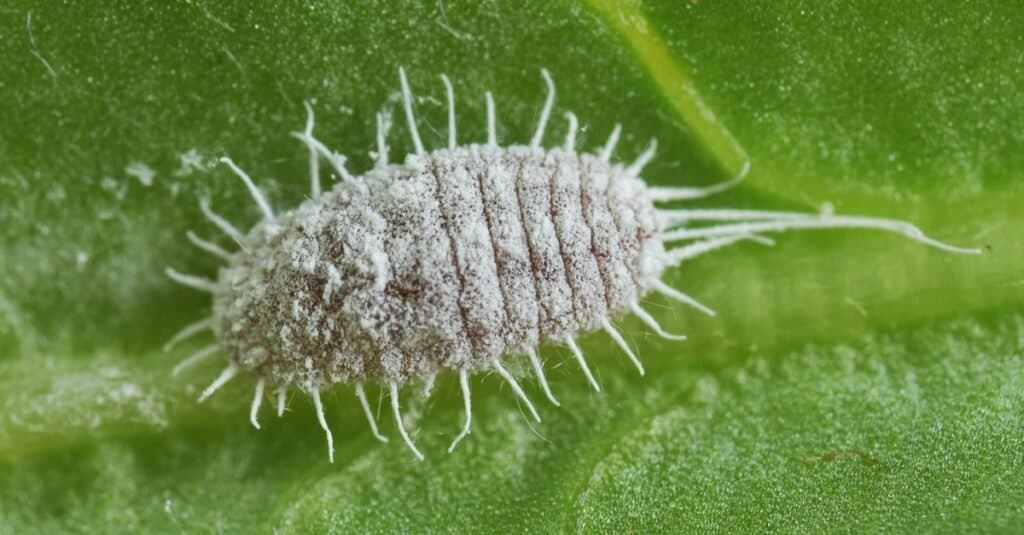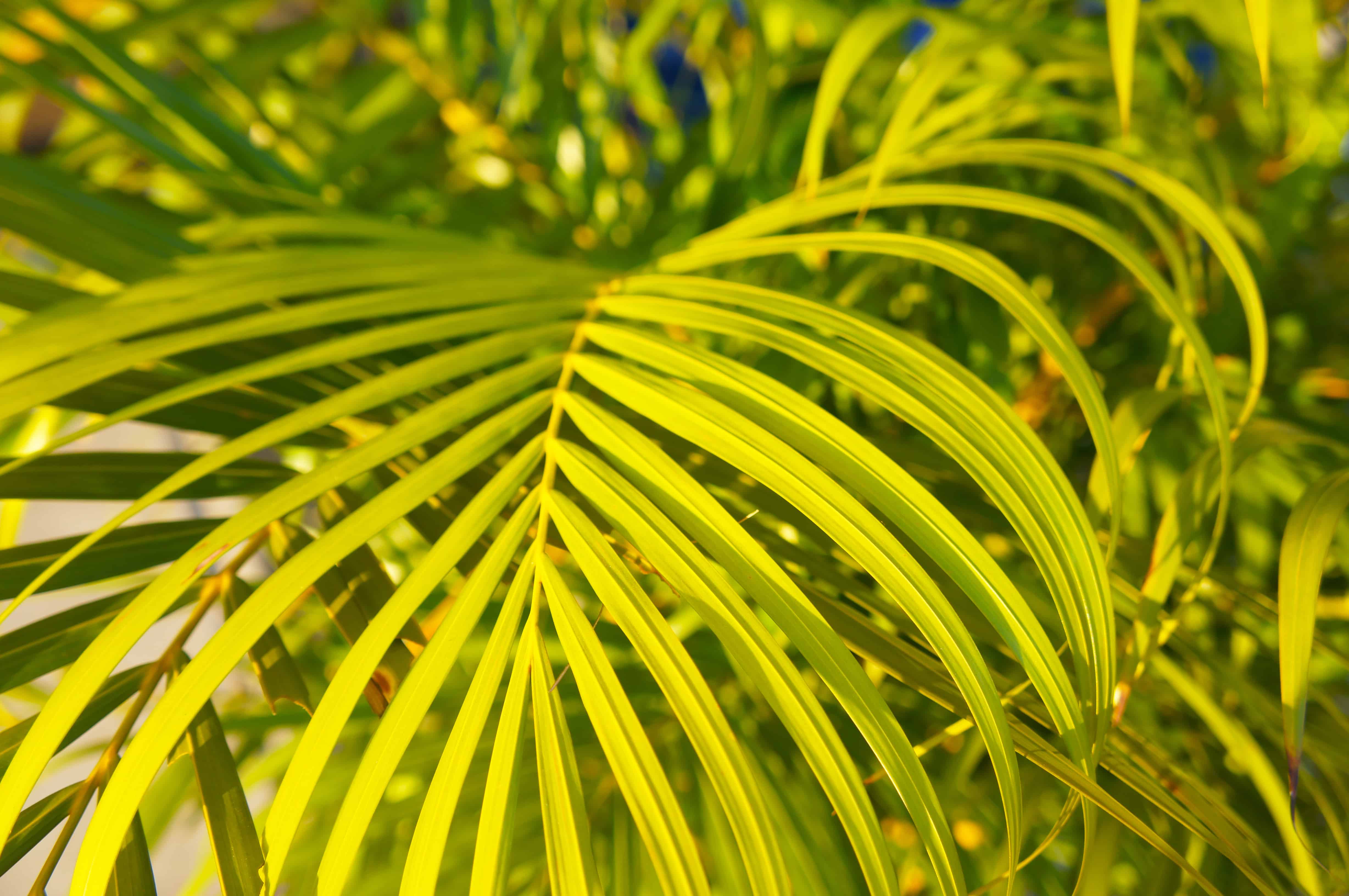Have you ever heard of the bamboo palm? The bamboo palm is, for starters, not a bamboo plant. It is a species of palm tree that somewhat resembles the look of the traditional bamboo plant. This gorgeous houseplant has earned its place as one of the most common palms owned by plant collectors, but it is a bit more delicate to care for than other, hardier palm plant species.
In this guide, we’ll explore the basics of this plant’s care and share a few interesting facts about the ever-stunning bamboo palm.
What is the Bamboo Palm Plant?
The bamboo palm plant, also occasionally referred to as the reed palm, is classified as Chamaedorea seifrizii. It is a member of the perennial flowering plant family Arecaceae. It is often confused for the parlor palm, which is actually the species Chamaedorea elegans. The bamboo palm is a tropical or subtropical plant that can easily reach 20 feet in height and five feet wide, though it tends to stay smaller as a houseplant. It is not cold-hardy and can only be grown outdoors in USDA hardiness zones 10 and 11. The evergreen leaves of this species are pinnately split, and a panicle of yellow flowers is eventually produced. The black, rounded, tiny fruit produced by this plant look tasty but is actually inedible. Most houseplants never flower or produce fruit.
The bamboo palm is indigenous to Mexico and Central America and thrives on mesic soils atop limestone in disturbed forest habitats as an understory plant. This particular species is grown as a hedge plant in states like Hawaii and Florida, where it is a popular landscaping plant. These palms are the perfect indoor plants for giving any space a tropical atmosphere. Also, they are included on NASA’s list of clean air species.

The bamboo palm’s vibrant leaves (pictured) are what make it such a popular indoor houseplant.
©Pereslavtseva Katerina/Shutterstock.com
How to Care for Bamboo Palm Plants
Since they require little upkeep and thrive in a range of lighting situations, bamboo palm plants are common indoor plants. They do need constant hydration, so if you have a tendency to forget to water your plants, you might want to pass on this palm.
Bamboo palms require soil that is thoroughly wet but never sopping wet or soggy. Both overwatering and underwatering can cause damage to bamboo palms, though it is always better to underwater your palm instead of overwatering. Let the soil’s top layer gradually dry out before watering it.
These tropical palm plants do best in warm, humid climates and can withstand USDA hardiness zones 10 and 11 when grown outside. They are not frost-resistant and will easily die if exposed to frost. Bamboo palms can survive perfectly well at normal indoor home temperatures and humidity levels, but they like a bit more humidity when it’s available. Your palm will benefit from more humidity if you place it next to a humidifier or on a pebble tray with water. Avoid keeping it near air vents or radiators.
The best tropical plant for medium to low light levels is definitely the bamboo palm. They don’t require strong light to flourish, unlike other palms. They can handle being put in north-facing windows and thrive in a wide range of lighting settings, from dim to bright. Since hot and direct sunlight will damage their fragile leaves, try to keep them away from windows with very harsh sunlight.
The optimal soil for bamboo palms is potting soil that stays moist but also drains well. The ideal soil has lots of humus and is permeable and well-draining. A fantastic DIY soil mixture for bamboo palms can be made by adding peat moss, tree bark, and perlite in equal parts to two parts regular potting soil. In order to promote healthy development, bamboo palm plants should be fertilized during the growing season. It is recommended to use granular, time-release fertilizers for this specific species. Be careful to evenly distribute the fertilizer over the potting soil and to thoroughly moisten it afterward. While the plant is dormant in the fall and winter, avoid fertilizing, as this can cause more harm than good.
Since they are so low-maintenance, these palms seldom ever require trimming. The bamboo palm plant will seem more perky and healthy if any dried, brownish leaves or burnt leaf tips are routinely removed. Just try to keep pruning at a minimum to avoid creating a leggy-looking plant.
As bamboo palms outgrow their original container, they will eventually need to be replanted. As they tend to grow slowly, you shouldn’t have to repot them too often. If you want to keep your bamboo palm small, don’t repot it into a significantly larger pot because the plant will only become as big as the container you give it. This will aid in regulating palm size. As a general rule of thumb, if you notice that your plant is rootbound, repot it into a new pot that is two inches wider than the original pot.
Bamboo palms thrive in a large pot on a porch or patio as an outdoor plant in a tropical environment. It can also be used to construct a striking and intriguing hedge or a wonderful specimen display. A tough, reasonably priced palm, the bamboo palm thrives in a range of interior environments with steady, moderate lighting and temperature. It is widely used as an office or mall plant and looks beautiful in any space that can offer room temperature and bright, filtered sunlight.

Bamboo palms (pictured) can only be grown in USDA hardiness zones 10 and 11, as they are not cold-hardy.
©Bruno H.P/Shutterstock.com
How to Propagate Bamboo Palm Plants
Usually, bamboo palms are cultivated from seeds. This propagation method will take quite a while to do. Often, purchasing young plants from your neighborhood nursery is preferable. Even the smallest and most affordable plants are between two and five years old when purchased from nurseries. It will take a very long time to produce a plant of substantial size if you try to grow your own from seed.
If you want to take on the challenge, use a seed tray with distinct sections to prevent the roots from becoming tangled. Cover the seeds with about half an inch of potting soil when planting them. Throughout the next six to nine months, keep the tray or pots in a location that has an average temperature of around 85 degrees F.
Maintain moisture in the planting media and offer filtered, indirect light. You’re attempting to create the atmosphere of a tropical jungle with these plants. If all goes according to plan, you will start to see growth in less than a year. You can lower the temperature a little bit and transplant your seedlings into slightly bigger pots as the seedlings start to emerge. To promote healthy root development, pots should be modest in size but deep.
Keep your seedlings in a warm, shaded environment while they develop. The best possible leaf color is encouraged by low sunlight. You can move your plants to a more sunny location after they are more established to promote stronger stem development.
Bamboo palms can also be propagated via their offshoots. During repotting, they can be cut out from the parent plant. However, this method is not often recommended as it puts these delicate plants under too much stress. If you want to give it a try anything, use disinfected and sharp scissors to cut the branch from the parent plant. Put the branch in a container with potting soil. Keep the branch warm and protected, and make sure the soil is consistently wet. It will soon become established, at which point you can start treating it like an adult plant.
Diseases, Pests, and Problems to Watch Out For
Like many indoor plants, the bamboo palm can become infested with scale, aphids, flies, mealy bugs, or spider mites. With the right ventilation, humidity levels, and adequate watering, these pests can typically be avoided. If you already have an infestation, try eliminating these pests using neem oil or insecticidal soap solution if they are bothering your plants.
Before starting treatment, be sure to clean the space around the plant. These pests often conceal themselves in tabletop cracks and crevices, flowerpots, etc. Use a clean cloth or sponge that has been dipped in the solution to apply the product for the first time. Eliminate the pests by cleaning all the leaves. To put the solution in cracks and crevices, use cotton swabs. After that, spray the plant liberally with the solution each day for a week.
Your issue should be solved as a result of this treatment. You might want to finish the process up by giving your plant a quick shower with a rather vigorous stream of water at the end of the week to wash off any stragglers and rinse out the remaining solution.
Mealybug and spider mite infestations can also affect palms planted indoors. Spider mites lurk on the undersides of leaves and like the dry surroundings of houses and offices. Keep humidity levels as high as you can to avoid spider mite infestations. To keep up high humidity levels, you can spritz your plants every day, use a pebble tray, or plug in a humidifier.
Plant illnesses including fungal infections, sooty mold, and viral infections can also result from overwatering or overcrowding. With adequate cleanliness and attention, you can easily avoid these diseases.
Bamboo palm plants are particularly vulnerable to too much salt, which can result in leaf burn. This is especially problematic for clustered bamboo palms. If you see salt accumulation on the soil’s surface, flush the area with filtered and distilled water, letting the water freely run through the drainage holes in the pot. Stop when the water is clear in color. Before watering again, let the soil get almost completely dry. This should flush the excess salt out of the soil.

Mealybugs (pictured) can quickly damage bamboo palms if not treated quickly.
©AjayTvm/Shutterstock.com
Are Bamboo Palm Plants Toxic?
The fruit of the bamboo palm is quite poisonous, but the leaves and stems are not dangerous. Be sure to stop fruit from dropping in areas where it may be accessed by children or pets. The blossoms and berries can easily be removed and thrown away as soon as they appear. However, indoor bamboo palms rarely ever produce fruit or flowers, so this shouldn’t be a problem unless the plant is grown in your backyard or garden.
The bamboo palm is an excellent plant to grow indoors, especially if you’re partial to tropical plants. If you can handle replicating its tropical environment indoors, you’ll have a thriving bamboo palm plant that will last for years.
Thank you for reading! Have some feedback for us? Contact the AZ Animals editorial team.








